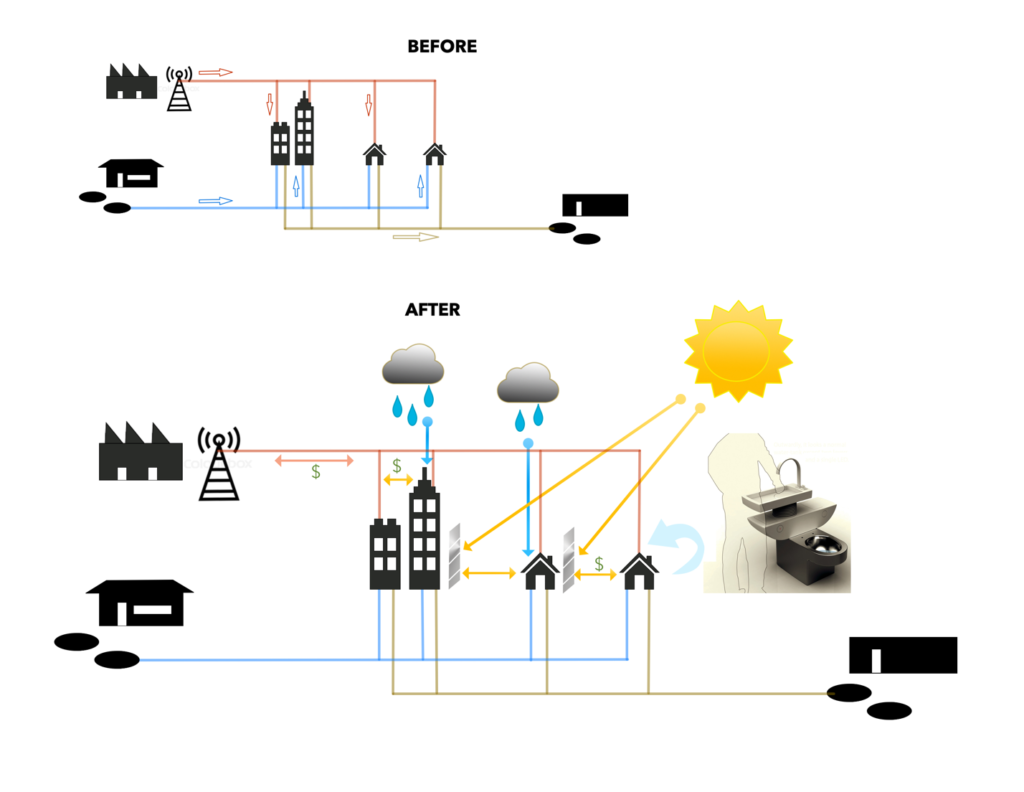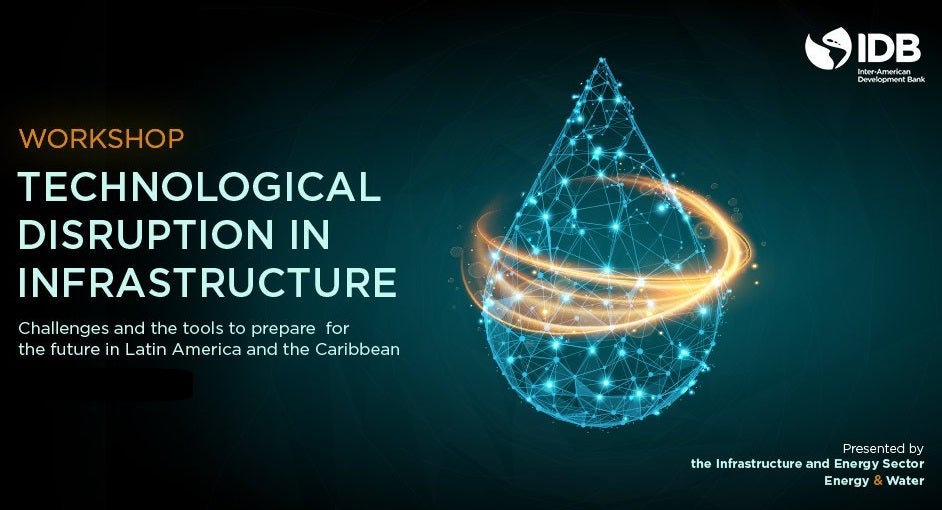It is clear that we will not be able to close the gap basic services in Latin America and the Caribbean if we do not invest in innovation in water and sanitation.
*By Luisa M. Mimmi and Fabiana Machado
Innovation is quickly and inevitably changing the way we think and provide infrastructure services. Processes are being transformed and boundaries across sectors shifted. A few weeks ago, we gathered a panel of experts to talk about the future of infrastructure services, in particular where the energy and water sectors are expected to be in 2030. To kick start the conversation, experts shared their views on what new technologies could potentially disrupt the water and energy sectors in the next decade.
The first, somewhat counterintuitive, insight agreed upon by the speakers was that technology, by itself, cannot bring radical change (let alone “disrupt” a pre-existing market solution). Dr. Glen Daigger (Professor of Engineering and Founder of One Water Solutions, LLC), highlighted the need for a cultural change to “reinvent” our approach to water management and address new challenges like population growth, rapid urbanization and growing water stress. The still prevalent large-scale and centralized water management systems (that are actually a legacy from the 19th and 20th centuries) reflect an era in which water treatment capabilities were minimal and not optimized to promote the reuse of water, nor the recovery of resources and nutrients from the treatment processes. The “One Water” slogan encapsulates the idea of a future-proof water management approach that makes the most of water in all of its states (groundwater, rainwater, potable or used water) and serves multiple purposes by being more distributed.
With the pragmatic wiew of a technical advisor to public utilities all over the world, Nikolay Voutchkov (President of Water Globe Consultants and top desalination expert) helped us zero in on another critical condition for innovation to shift towards a more sustainable and reuse-oriented circular economy model. Voutchkov’s own definition of “disruptive” requires a unique solution that is at least 20% more efficient than the existing alternative. One example is the rapidly increasing efficiency, productivity and durability of membranes used in desalination. While we may consider it a niche solution, by 2030 desalination could provide approximately 25% of the municipal water supply of the urban coastal centers worldwide (currently estimated 10%). Similar technical improvements are happening in the water reuse field. Rapidly decreasing production costs are making these sustainable options, a viable alternative to cheaper, but finite conventional freshwater resources, thus enabling water stressed areas to “diversify the portfolio of water supply”.
Taking a closer look at the ongoing digitization of the water sector, Will Sarni (Founder and CEO of Water Foundry) explored its potential to strengthen the watershed—assets—consumers value chain. For upstream surface and groundwater monitoring, satellite imagery is already extensively used, as well as for flood forecasting. Moving along the value chain, the most forward-looking water suppliers have started using Advanced Metering Infrastructure (AMI) systems to gather, process and analyze in real time data on pressure, flow, and water quality. Thanks to the insights from these data, incidents like corroded pipes, leaks or even contaminations can now be remotely predicted and addressed more promptly and efficiently. Exploiting “digital twins” (providing a complete virtual model mirroring physical assets) is opening up new possibilities also for simulating modifications to the water systems before they are implemented in reality. With software like Dropcountr and WaterSmart, digitization can also become the tool to engage the end consumers in sustainable behaviors making them aware of individual water consumption patterns.
Technology-wise, the water sector seems ready to shift towards a more responsible, sustainable and transparent “One Water” approach to water management. The open question now is what needs to come next? Will these technological advances push for the needed regulatory reforms, or is regulation reform a pre-requisite for the sector to seize the opportunities presented by innovation? Some familiar Silicon Valley stories (think Uber or Airbnb) exemplify disruptive innovation happening prior to regulatory reform. As extensively discussed at the workshop, however, regulation plays a much more prominent role in a sector traditionally managed as a natural monopoly, and constrained by the recognition of water as a human right.

Another relevant issue raised during our discussion refers to what would be the optimal level at which to promote and adopt such changes. Many of the innovations aligned with the concept of One Water are local and can be applied at a smaller and decentralized scale. Most of the best practice showcased at the workshop were at the city level: Singapore’s Public Utility Board (PUB) operates as a holistic smart water grid, while China aims to turn 16 flood-prone urban areas into “sponge cities” absorbing and reusing at least 70% of rainwater by 2020. In a generally water-rich region like Latin America and the Caribbean, certain cities especially hit by weather and water-related issues might have a stronger incentive to re-think their water management systems. Of course, whether municipal agencies have enough financial resources (or political will) to embark in the necessary retrofits and innovations remains a challenge. Join the Water and Energy divisions as we continue to engage with these important questions.
* Luisa Mimmi is a consultant at the Water and sanitation division at the IDB. She is a is a policy analyst, with over 10 years of consulting experience in Multilateral-Development Banks, NGOs and the private sector She holds a Master of Public Policy from Georgetown University (US) and a BA in Economics from Università di Pavia (Italy).
Fabiana Machado is a Senior Economist at the IDB. She holds a PhD in Political Economy with emphasis on quantitative methods. Currently working on research and evaluation aimed at improving access to quality water and sanitation services and the sustainable management of water resources. Previously conducted research and evaluation on political representation, poverty, inequality, preferences for redistribution and victimization.


Leave a Reply